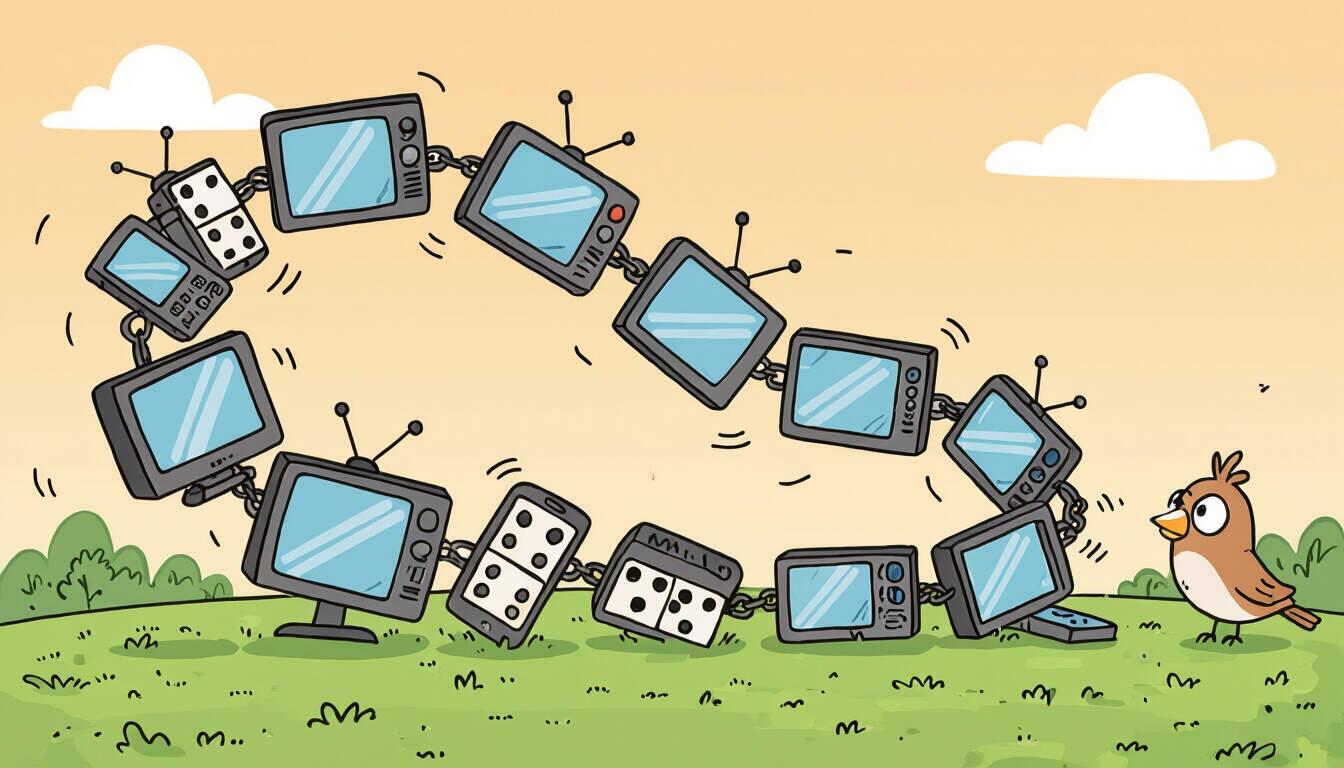The Dynamics of Media Influence Loops and Second-Order Thinking
 by Verner Mayer
by Verner Mayer
Media influence loops shape how information spreads and affects behavior, often through feedback mechanisms. By applying second-order thinking, individuals can anticipate deeper consequences, fostering better decision-making in daily life and professional settings. This article examines these processes for personal growth.

Media influence loops play a key role in how information circulates and impacts society. These loops occur when media output triggers responses that feed back into the system, creating cycles of amplification or dampening. For instance, a news story might spark public discussion, which then influences further coverage and shapes opinions in unexpected ways.
Second-order thinking involves looking beyond immediate effects to consider subsequent outcomes. In the context of media influence loops, this means examining how initial exposure leads to chain reactions. A viral social media post, for example, can start a trend that alters consumer behavior, which in turn affects market trends and prompts more content creation.
Feedback loops are central to these dynamics. Positive feedback loops intensify effects, such as when popularity boosts visibility, leading to even greater reach. Negative feedback loops, on the other hand, stabilize or reduce influence, like when backlash curbs a story's spread. Understanding these patterns helps in analyzing how media shapes cultural norms.
In professional environments, recognizing feedback loops can improve strategies. Marketers might use data to predict how campaigns will evolve, avoiding pitfalls from unintended consequences. Students of cognitive processes can benefit by applying second-order thinking to evaluate information sources critically.
How Media Influence Loops Form
Media influence often begins with a simple stimulus, such as a broadcast or online article. This initial input can create a loop where audience reactions generate new content. For example, user comments on a video might inspire follow-up videos, perpetuating the cycle.
Second-order thinking encourages deeper analysis. Instead of stopping at the first reaction, individuals should consider long-term implications. A policy debate in the media could influence public policy, which then affects daily life and circles back to media narratives.
These loops appear in various forms, from entertainment to news. In personal development, awareness of such cycles promotes resilience. By anticipating how media exposure might alter perceptions, people can make informed choices about their consumption habits.
The Role of Systems Thinking
Systems thinking provides a framework for mapping second-order thinking in media contexts. It views influence as interconnected parts rather than isolated events. For curious individuals, this approach reveals how small actions contribute to larger patterns.
In education, incorporating systems thinking into curricula can enhance learning. Students might explore case studies where media loops have driven social change, learning to identify potential biases and outcomes.
Professionals in fields like journalism or public relations rely on these concepts daily. They assess how stories might ripple through society, using insights to craft messages that align with ethical standards.
Implications for Cognitive Processes
Cognitive processes are deeply intertwined with media influence. Repeated exposure through loops can reinforce certain beliefs, making it essential to apply second-order thinking for balanced perspectives. This practice aids in distinguishing fact from opinion and reducing susceptibility to manipulation.
For personal growth, breaking negative loops is crucial. If media consumption leads to anxiety, recognizing the pattern allows for adjustments, such as seeking diverse sources to counteract echo chambers.
In group settings, such as workplaces or communities, understanding these dynamics fosters collaboration. Teams can use second-order thinking to foresee how decisions will play out over time, leading to more effective planning.
Practical Applications
Applying these ideas starts with observation. Track how a news event unfolds and note the feedback mechanisms at play. For instance, a celebrity endorsement might boost a product, but subsequent reviews could create a counter-loop.
In daily routines, individuals can practice second-order thinking by questioning the origins and potential ripple effects of information. This habit supports ongoing development and helps in navigating information overload.
For students, exercises like debating media impacts can build analytical skills. Professionals might integrate loop analysis into decision-making processes to anticipate challenges.
Balancing Influence and Awareness
While media influence loops offer opportunities for positive change, they also pose risks. Over-reliance on certain sources can limit viewpoints, highlighting the need for critical engagement.
By prioritizing second-order thinking, people can mitigate these issues. This involves reflecting on personal responses and considering broader societal effects, ultimately leading to more thoughtful interactions with media.
In conclusion, exploring media influence loops through the lens of second-order thinking enriches cognitive processes and supports personal development. This analytical approach empowers individuals to engage with media more effectively, promoting informed and intentional choices.
